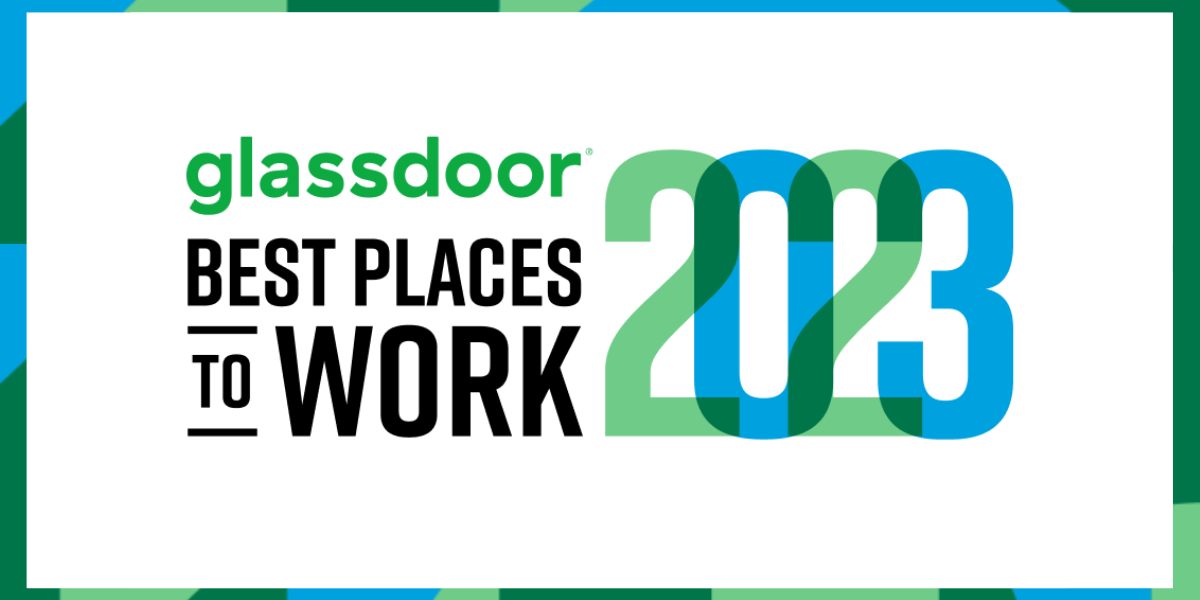Engaging in remote and hybrid work dynamics, QuadReal, a global property management company, found the ideal solution for fostering employee engagement, collaboration, and culture by integrating LEAD.bot company-wide, championed by its People Ops team. The results were astonishing. Within two years, QuadReal cultivated a culture so rich in connection and collaboration that it earned a distinguished ranking as the No. 3 Best Places to Work in Canada by Glassdoor in 2023!
Creating and maintaining an environment where employees feel interconnected and engaged is increasingly challenging, especially within hybrid work cultures where organizational silos are expanding and geographical distances are increasing due to the pandemic. Now, more than ever, a key aspect of the successful operation of any organization is the engagement and satisfaction of its employees.
Recognizing this, many leaders came to the realization that they needed to facilitate more casual conversations across different teams and locations, breaking the silos and promoting a sense of unity. However, the manual process of creating these connections is often unsustainable when dealing with hundreds of employees scattered across different time zones.
At the same time, the financial feasibility of new solutions can sometimes be a hurdle. How can leaders get their ideas approved by financial departments, especially if the solution is a pioneering one? Here is where a well-designed and data-driven strategy comes into play.
This brings us to the journey of QuadReal and LEAD.bot, a powerful example of a systematic and strategic approach to enhancing employee engagement and promoting a cohesive, inclusive work culture, regardless of physical location.
Evaluation, Implementation, and Measurement.
This journey, which resulted in building a culture of collaboration and connection, is based on a well-defined path: Evaluation, Implementation, and Measurement.
It all begins with understanding the challenges employees face in a remote or hybrid work environment. New hires often feel lost in the new environment, while long-time employees may suddenly feel disconnected and leave. These challenges highlight the need for connection and engagement. A sense of connection makes employees more engaged and happier, and higher engagement often leads to higher retention.
HR experts suggest introducing new communication channels that ensure seamless information flow across the global workforce, and rebuilding the sense of connection. As a leader, collecting and sharing research and articles related to this approach can also help get your superiors on board. Once your boss is supportive, it’s time to move on to the proof of concept.
Step 1: Evaluation – IT Due Diligence
Key stakeholders need to be looped in from the get-go when HRs explore new platforms. Once they finish the due diligence, they’d love to give a green light to implement LEAD in their Microsoft Teams enviroment.
Step 2: Pilot Run
There are important steps when structuring the pilot:
• Define program goals, and identify measurement criteria
• Centralize resources and educate participants
• Collect feedback throughout the pilot
• Evaluate feedback and make a decision based on measurement criteria
People Ops from one of our customer companies initially tried pairing people in the IT department and Financial department. They had 20-50 people on each team, and after receiving excellent feedback after 2 to 3 pairings over half a month, HR decided to propose extending access to LEAD across the entire company.
Step 3: Get Approval from the Leadership
Approval from leadership is a critical step. The HR manager needs to gather positive results from the pilot, share the findings with leadership, and craft plans to launch company-wide. In addition, HR managers can share the value proposition: how LEAD builds bonds between employees by serendipitously connecting employees across teams, departments, and locations.
Measurement is key – especially for leaders to connect with employees in remote or hybrid work environments – to let leadership know an extra investment would help the company reach its cultural goals. You can consider using employees’ voices from the pilot run as a data point for the leadership.
If you haven’t gotten enough data points from running a pilot, please also consider sharing articles from experts so that leaders who are less familiar with people operations can learn and understand the value as well. Here are some samples you can use:
1. TO BUILD YOUR BUSINESS, SMASH YOUR SILOS
2. CREATE COMMUNITY AT WORK BY CHECKING IN WITH YOUR COLLEAGUES
3. HOW DOES CASUAL CONVERSATION IMPACT YOUR EMPLOYEE COLLABORATION
Step 4: Preparations!
1. Assign project leaders to launch LEAD.bot company-wide. Like any other company-wide project, we suggest you have at least one HR and one IT admin as the main controller of this project.
2. Create a motto in your branding of this program. For example, Quadreal creatively created its own motto as below:




3. Create swag and recruit Culture Champions. You can give the swag to your culture champions, who play critical roles. You recruited pre-launch, and their job is to promote your program to their teammates and colleagues. You can give them LEAD X your company logo printed T-shirts, Mugs, and interview their stories to share in the newsletters later on with your employees.


4. Set up communication rules and communicate the expectations and best practices to each team leader.
Step 5: LAUNCH!
After getting buy-in from leadership, get leadership involved in the process to make the launch successful by participating in LEAD channels, and encouraging their teams to participate.
Make an announcement in the weekly employee newsletter, or general channel.
Printing out LEAD channels, providing LEAD mugs for meet-ups, and encouraging employees to take selfies and share their key takeaways on the general channel.
Step 6: Make it a New Cultural Habit
LEAD is an ongoing program, with new pairings every week on the schedule. Employees are encouraged to connect not only for a set of times but in their own interest. It’s important to keep the momentum and build LEAD as a new cultural habit. The teams are encouraged to connect and share screenshots and takeaways from the meeting on matching channels.
LEAD can be used not only to connect employees, but also for embracing a culture of learning, mentorship, and DE&I discussions, to share additional content and tools to handle microaggressions, interruptions, and inappropriate speech, and to build an inclusive workplace.
It would be great to have your Culture Champions enlarge their team, and give recognition or rewards to the highly active employees.
Step 7: Measuring Employee Experience
After implementing LEAD, HR also suggests running a survey to understand the impact that LEAD has on employee engagement.
• How does LEAD make a difference in their experience of hybrid work?
• How the experience could be improved?
• What impact has LEAD had on workplace culture?
• Other ways they’d like to see platforms used
• Preferred frequency & duration
Navigating the complexities of fostering connection within an enterprise might be challenging, but the rewards are considerable and the possibilities for crafting engaging programs are virtually limitless. LEAD plays a pivotal role in creating intentional, meaningful relationships amongst employees, bridging the gaps between teams, departments, and locations in an almost serendipitous manner. The end game? A more unified, efficient, and contented workforce that thrives in the remote and hybrid work environment.
If you like this article, please also take a look at our article about culture change management. If you would like to share your company stories, please email alyssa@lead.app and our editorial team will reach out to you shortly.
In summary,
How to launch a virtual coffee app successfully?
- Evaluate challenges and need for connection.
- Conduct a pilot run for proof of concept.
- Get leadership approval for company-wide launch.
- Prepare with project leaders and branding.
- Launch with leadership involvement and announcements.
- Foster ongoing connections and recognition.
- Measure employee experience with surveys.













